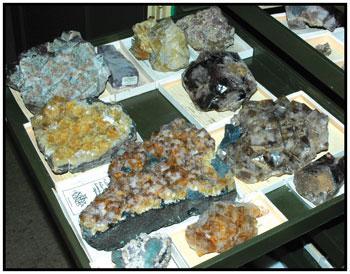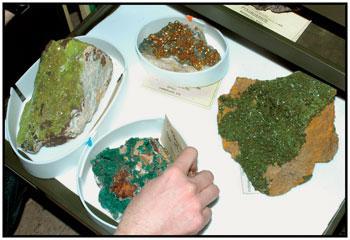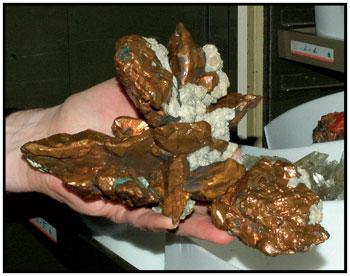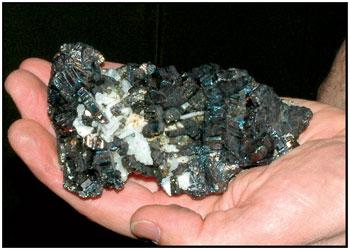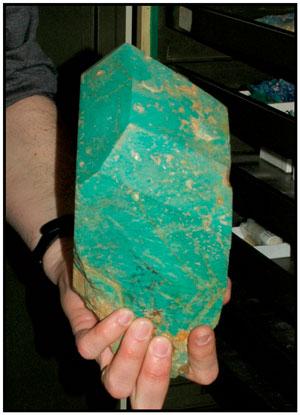Vaux, William S. (1811-1882 )
William Sansom Vaux was born in Philadelphia on May 19, 1811, the eldest son of George Vaux, a member of the Philadelphia Bar, and his wife Eliza Head Sansom. Both parents were members of the Society of Friends (Quakers), though William would later leave that religion and become an Episcopalian. Eliza was the daughter of Susanna Head (1766-1845) and William Sansom (1763-1840), a prominent Philadelphia builder and merchant in the East India trade.When William S. Vaux was a boy he acquired a strong taste for mineralogy, and he pursued the study of that science and later of archaeology with enthusiasm throughout his life. He may have been influenced in this by his uncle, Joseph Sansom, who assembled one of the first mineral collections in America (later given to Haverford College). Vaux inherited substantial wealth, and never actively engaged in business except to the extent that it was necessary for the management of the family estate. In the census records he listed his occupation as "Gentleman." Vaux was elected to Philadelphia's Academy of Natural Sciences in March 1834, and during the following years he served the Society intellectually and generously. He was an auditor from 1856 and one of the Curators from 1838 as well as treasurer from 1840. Except for the year 1875, he was also a vice-president continuously from 1860. During his lifetime he gave generously to the Academy's library and museum, especially in the branches of mineralogy and ethnology.
Vaux began collecting minerals about 1820, and through purchases built the finest collection of minerals ever assembled up to that time in the United States, sparing "neither time, labor nor money." He also influenced his nephew, George Vaux, Jr. (1863-1927), to collect minerals. He was one of eight founders of the Numismatic and Antiquarian Society of Philadelphia, its senior vice-president, and from 1871 till his death treasurer of the American Association for the Advancement of Science, of which society he had been a member since its foundation.
William Vaux suffered from poor health during his later years, partially due to advancing age but also because of a disease acquired in Rome during one of his last trips to Europe. He died of an abdomenal tumor in Philadelphia on May 5, 1882, his wife (Emily Graeff) and only son (Frederick Vaux), having predeceased him. Frederick died young and was childless; consequently William Vaux was left without any direct descendants. He bequeathed his mineral collection (valued at the time at over $50,000), except 25 specimens choosen by his brother George's family, to the Philadelphia Academy of Sciences, along with a $10,000 endowment to maintain and expand the collection.
By 1883, the Vaux collection had been transferred to the Academy's museum and was arranged in seven upright cases and 39 horizontal cases. Arrangement of the species was according to the system of Dana (5th edition), and embraced 6,391 specimens representing 466 species or groups, all mounted in trays and labeled. The endowment Vaux left was also used for good purchases that amounted to 60 specimens in 1884, 104 in 1885, 114 in 1886 and 156 in 1887. Included in the purchases were a 4 ft., 100 lb. stalagmite of aragonite from the Organ Mountains, New Mexico, a fine group of rutile from Graves Mountain, Georgia, a specimen of wulfenite from the Red Cloud mine, Arizona, described as a stone matrix of 6 x 8 inches coated over with beautiful red translucent crystals, and a large group of Japanese stibnite weighing 125 lb. and containing 70 to 80 well terminated crystals. Today, the Vaux Collection remains at the Academy, in storage, and is known by its principal benefactors name, although its sale appears to be imminent. The 25 specimens withheld by his brother's family were sold in the early 1970's.
minrecord@comcast.net
Citation format for this entry:
WILSON, Wendell E. 2022
Mineralogical Record
Biographical Archive, at www.mineralogicalrecord.com
A drawer full of big English fluorites (Collection of the Philadelphia Academy of Natural Sciences–in storage)
Pyromorphites and a dark green Cu-rich adamite from Laurium, Greece (Collection of the Philadelphia Academy of Natural Sciences–in storage)
A Cornish Chalcocite, heavily corroded (Collection of the Philadelphia Academy of Natural Sciences–in storage)
A large Japanese Stibnite and a large Joplin, Missouri Calcite from George L. English (acquired in 1893-1899) (Collection of the Philadelphia Academy of Natural Sciences–in storage)
Spectacular native Copper crystal group from Michigan, one of the finest specimens in the collection (Collection of the Philadelphia Academy of Natural Sciences–in storage)
Superb Cornish Bournonite from the Herodsfoot Mine (Collection of the Philadelphia Academy of Natural Sciences–in storage)

